ABB has introduced Sensi+™, a compact natural gas contaminants analyzer that is based on a unique tunable diode laser (TDL) technology known as Off-Axis Integrated Cavity Output Spectroscopy (OA-ICOS). The technology accurately, reliably and simultaneously measures corrosive substances such as hydrogen sulfide, carbon dioxide and water →01-02 in real time in complex and time-varying natural gas streams.
Stefan Parmentier Process Automation Québec, Canada, stefan.parmentier@ca.abb.com; Kyle Owen Process Automation San Jose, CA United States, kyle.owen@us.abb.com
Pipeline operators are often caught in a bind. On the one hand, they must ensure that contaminants in natural gas transmission networks are minimized because they can cause corrosion and thus potentially pose a significant hazard to an operator’s business. On the other hand, mitigating the risk of natural gas contaminants can often be a source of frustration, as companies are typically required to manage numerous technologies and devices to detect contaminants independently. This legacy approach is complex, failure-prone and expensive, as each contaminant requires its own analyzer, maintenance schedule and specific skill set to operate and validate.
Natural gas contaminants such as hydrogen sulfide (H₂S), carbon dioxide (CO₂) and water (H₂O) represent both a safety and a pipeline integrity risk. Left undetected, they can cause internal corrosion within the natural gas infrastructure, notably in gas pipelines and storage facilities as well as other mission-critical assets, ultimately cascading into pipeline failures. As a result, requirements in custody transfer mandate continuous measurement of these target substances. Moreover, industrial production processes cannot tolerate excessive concentrations of these substances, meaning that gas quality monitoring and control is required to meet operational objectives and production yield.
Yet today’s analyzers often offer sub-optimal measurements and instrument reliability, false readings (especially during process upsets), and tedious, time-consuming maintenance in remote locations due to the use of legacy technologies (see below), such as lead acetate tape, UV analyzers, conventional TDLs and chilled mirror-based analyzers.
What follows is a look at the three major contaminants and the technologies that have been used until now to detect them.
H₂S
Raw, untreated, natural gas contains H₂S, a gas that can damage pipelines, storage facilities and gas turbines, and that poses a threat to human safety. Although the concentration of H₂S in natural gas varies geographically (from parts-per-million to percent levels), due to its toxicity, flammability and corrosiveness, H₂S must be monitored at all stages from the wellhead to the customer.
Conventional analyzers based on lead acetate tape are capable of detecting H₂S but have high maintenance requirements associated with replacing and disposing of the tapes in an environmentally safe manner and can suffer from reliability issues. On-line gas chromatographs take three to six minutes between measurement updates and therefore cannot sense rapid changes in H₂S. In addition, gas chromatographs require consumables such as carrier gas and flame fuel cylinder gases. Analyzers that employ broadband UV light sources and narrow bandpass filters are prone to interference from variations in background gas concentrations. Moreover, their lamp lifetimes are relatively short. Conventional TDL-based methods often rely on chemical scrubbing methods and a priori knowledge of the stream to operate, yet fail to offer comparable speed, sensitivity, selectivity, or accuracy and are unable to detect the variety of measured contaminant gases in a single enclosure as ABB’s offering.
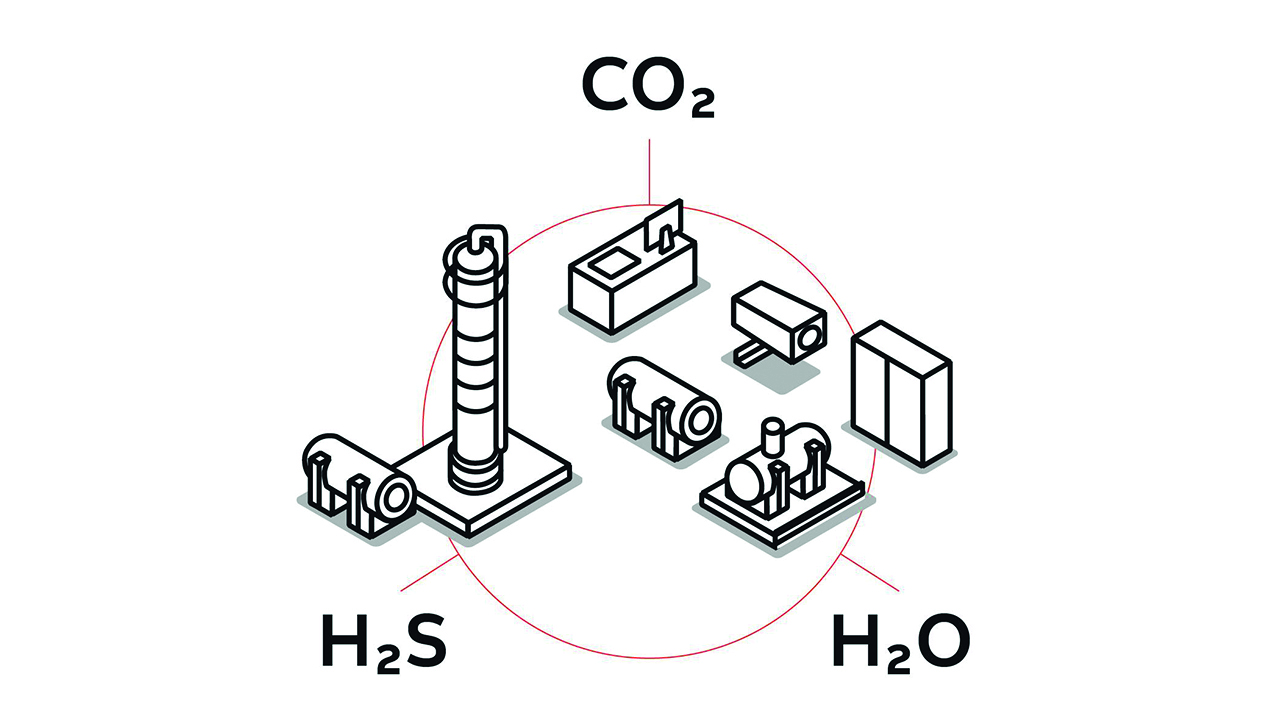
CO₂
Carbon dioxide naturally occurs as a dilutant in oil and gas reservoirs and can react with H₂S and H₂O to form compounds that can corrode steel pipelines. In addition, excessive CO₂ levels reduce the heating value of natural gas. Thus, CO₂ levels in pipelines must be monitored and controlled when needed. Wellhead natural gas can contain as much as 30 percent carbon dioxide. Removal of CO₂ from natural gas utilizes membrane technologies or large amine plants.
Measuring carbon dioxide concentrations is required at processing plants and at natural gas custody transfer points to ensure that levels are low enough to meet quality specifications for pipeline transportation.
To date, approaches for CO₂ analysis in natural gas have included gas chromatography and absorption spectroscopy using infrared light sources or diode lasers. As mentioned elsewhere, gas chromatographs suffer from the need for consumables and are slow to respond, while IR-based analyses lack sufficient sensitivity. Traditional TDL-based methods are typically single-gas analyzers that can suffer from cross sensitivity effects.
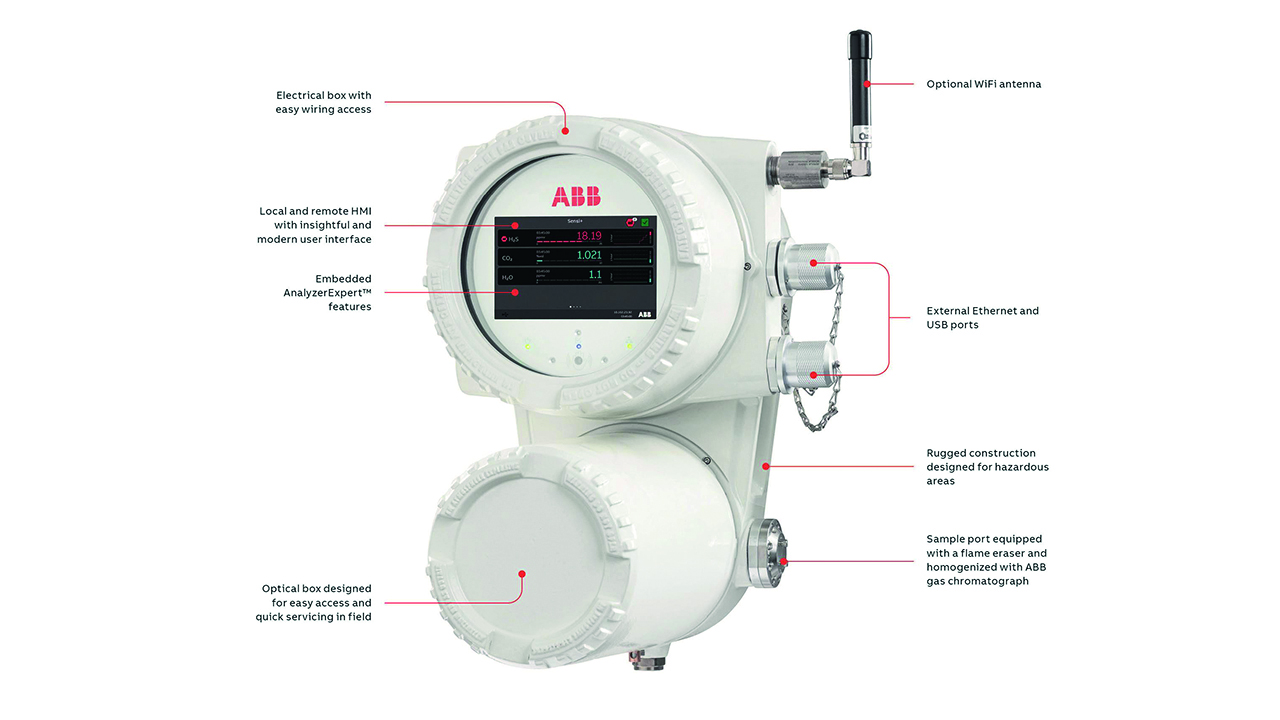
H₂O
H₂O in natural gas corrodes pipelines and exacerbates the presence of other contaminants by combining to produce acids that attack carbon-steel piping, valves and other equipment to cause internal corrosion and metal loss over time. Moreover, phase changes in water, due to temperature and pressure variations, can accelerate internal pipe corrosion.
The measurement technologies that are traditionally employed to measure water vapor in natural gas pipelines include electrochemical and electromechanical approaches, as well as conventional TDL-based methods. However, these methods have significant limitations. For instance, electrochemical sensors are prone to drift, cross sensitivity, contamination and frequent maintenance or replacement. Quartz crystal microbalance and chilled mirror sensors are very sensitive but cannot differentiate water from other molecules that condense and are also sensitive to corrosion as the sensor is in direct contact with the gas. Chilled mirror sensors are slow to respond to and recover from upsets due to thermal equilibration timescales. In addition, similar to H₂S sensors, conventional TDL-based methods for H₂O often rely on chemical scrubbing in order to distinguish H₂O from background gases.
The Sensi+ solution
With a view to ensuring the detection of H₂S, CO₂ and H₂O, ABB has introduced Sensi+, a compact natural gas contaminant analyzer that accurately, reliably and simultaneously measures the above-mentioned substances in real time in natural gas streams. In contrast to legacy solutions, which have many drawbacks, Sensi+ offers a significant reduction in capital equipment expenditures (CAPEX) and operational expenses (OPEX), as well as space requirements. Sensi+ also functions automatically in a wide range of natural gas blends without any field calibration. In addition, the analyzer’s low sample flow rate results in a very low emission rate.
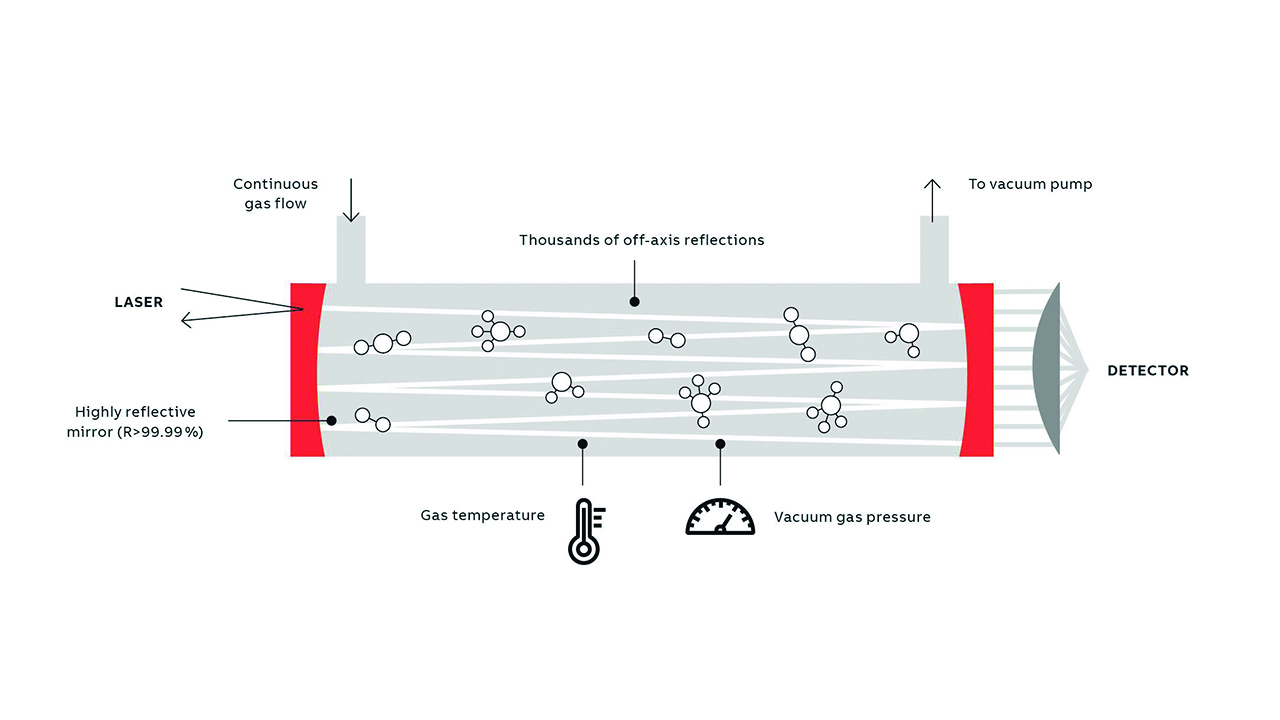
ABB’s unique laser gas absorption technology →03-04, which is called Off-Axis Integrated Cavity Output Spectroscopy (OA-ICOS™), enables sensitive measurements due to the kilometers of effective path length in the small cavity, while being more robust than traditional multi-pass or cavity techniques. The analyzer’s modular design, modern user interface, and comprehensive system health metrics make it easy to use and troubleshoot remotely, thus reducing the need for expensive, time-consuming nuisance site visits. This step change in analyzer design, coupled with built-in hardware redundancy features and remote diagnostics, can significantly reduce both unnecessary downtime and costly onsite intervention.
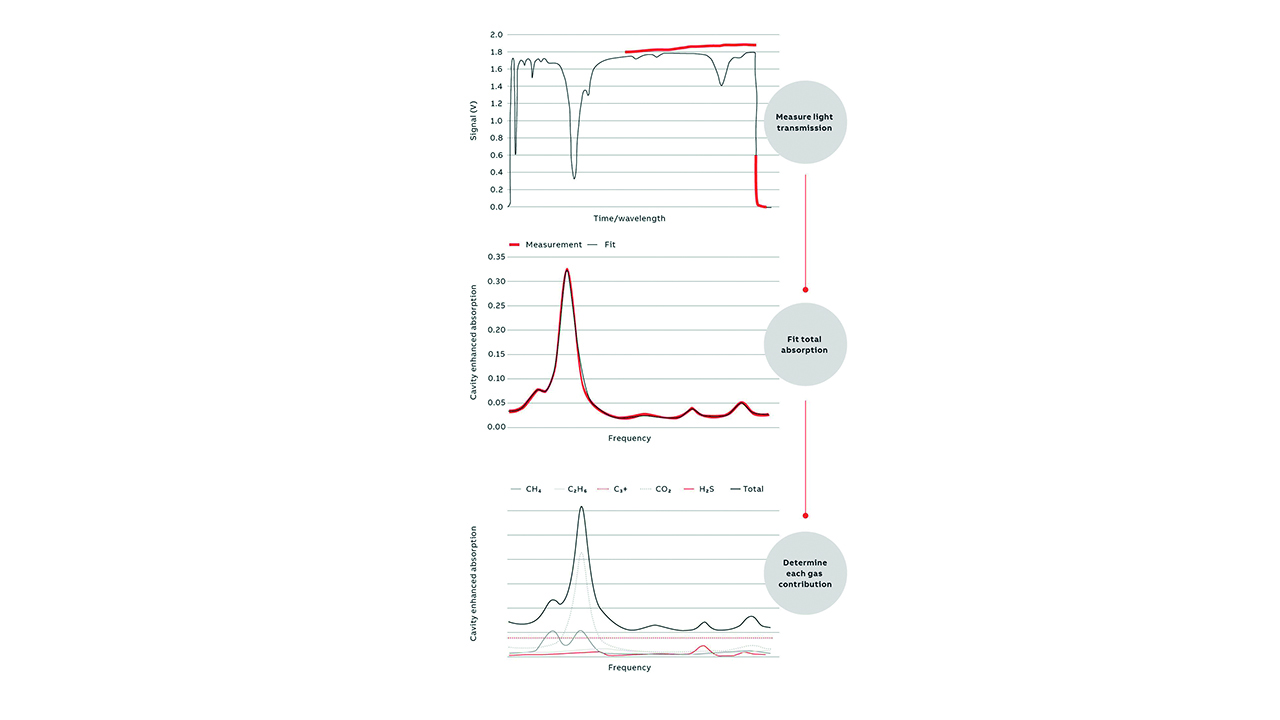
Sensi+ offers the following advantages:
• Simultaneous measurements of up to three gas contaminants. A single, compact analyzer based on multiplexed laser absorption spectroscopy saves space and obviates the need for multiple analyzers while simplifying deployment, operation and service without compromising performance.
• Fast response and recovery minimize product waste, maximize uptime and ensure facility safety and productivity. Rapid flow time response allows operators to react to process anomalies and redirect pipeline gas that contains abnormally high levels of contaminants. The analyzer recovers quickly after exposure to flows with elevated concentrations of contaminants.
• Proven laser-based technology combined with recent advances in spectroscopic analyses provide the highest accuracy, precision, sensitivity and reliability. For over 15 years, ABB’s LGR-ICOS laser absorption technology has been at the core of the world’s most reliable gas analyzers used for applications requiring the highest overall performance. This technology has now been updated with customized electronics and an enclosure design suitable for hazardous area installation, along with advances in spectroscopic analysis algorithms, to yield accurate measurements in complex and time-varying natural gas blends with minimal cross interferences without any requirements for chemical scrubbers [1].
• High dynamic range allows reliable gas concentration measurements over several orders of magnitude. No other technology allows reliable measurements of contaminants at both very low and high concentrations, thus allowing reliable measurement of a wide range of applications with a single instrument.
• Rugged laser technology eliminates the need for light source replacement. ABB analyzers employ near-infrared diode lasers that provide many years of reliable continuous operation regardless of environmental conditions.
• The Sensi+ explosion-proof enclosure has been designed for easy deployment and installation in hazardous environments. Its dual seal certified feature obviates the need for an extra process seal. Furthermore, the analyzer satisfies critical global area classifications for the natural gas industry: Class I, Division 1, Groups B, C, D T6; Class I, Zone 1, AEx/Ex db IIB + H2 T6 Gb, Ex db IIB + H2 T6 Gb, ATEX/UKCA II 2 G Ex db IIB + H2 T6 Gb.
• A simple and comprehensive user interface →05 provides continuous detailed digital health metrics in real time. Modern UI design provides users with confidence regarding system health and allows fast, easy service.
• Convenient and cybersecure connectivity allows 24/7 remote monitoring using industry standard communications protocols. A secure ethernet-enabled web (HTTP) interface provides comprehensive diagnostics, instrumentation, configuration, and measurement information.
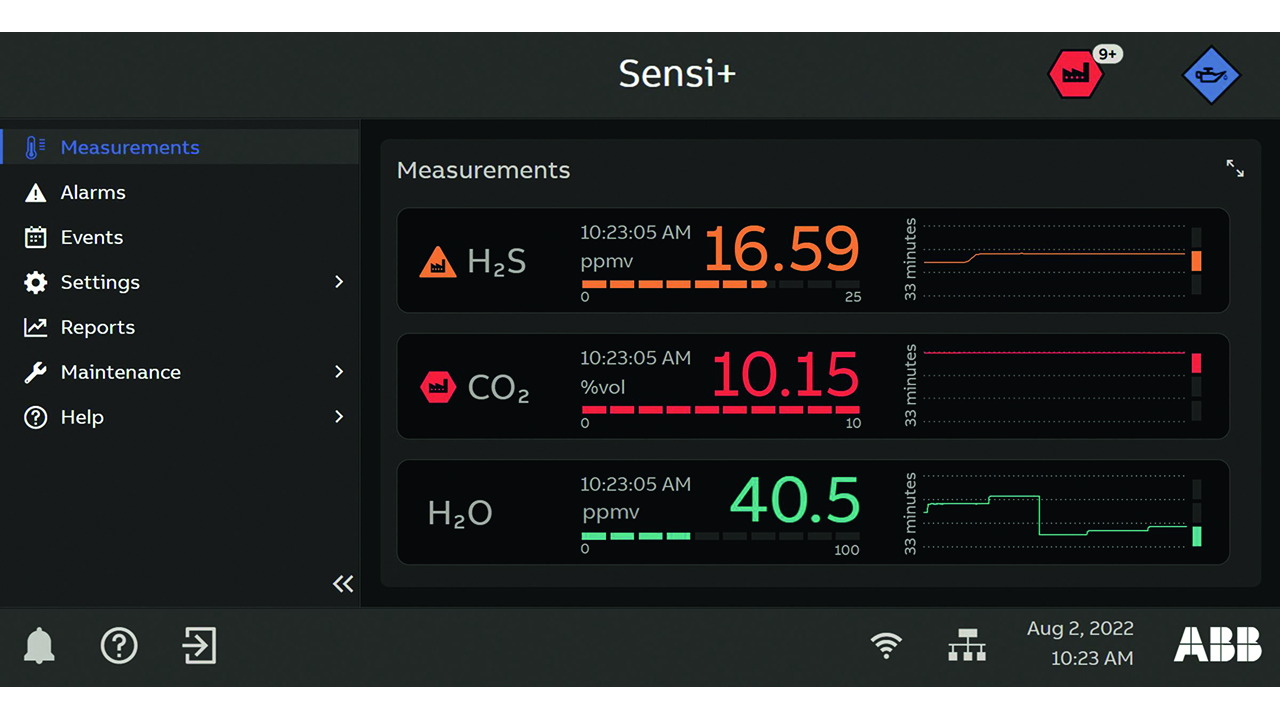
All in all, ABB’s LGR-ICOS™ laser technology ensures unsurpassed measurement precision and accuracy under all process conditions while providing the highest analyzer reliability and uptime, as well as the lowest cost of ownership →06. Coupled with ABB’s market-leading natural gas chromatograph (NGC) series, the introduction of Sensi+ makes ABB the first company to offer a complete gas quality solution that combines composition and contaminant measurements into a comprehensive, compact and economical measurement system.
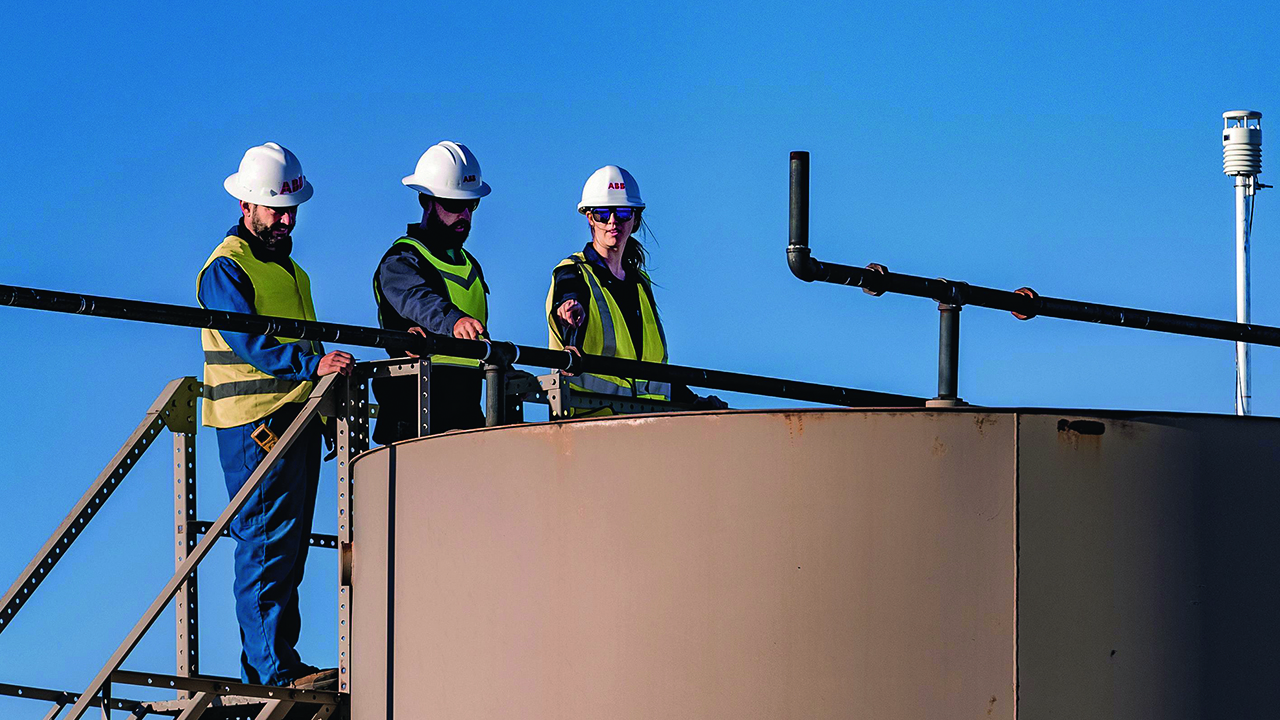
References
[1] "Sensi+ GLA533-NG: Take immediate action with fast instrument response times," (ABB white paper), Available: https://search.abb.com/library/Download.aspx?DocumentID=WP%2FSensiPlus%2FGLA533-NG_ResponseTime_EN_Letter [Accessed September 13, 2023.]
